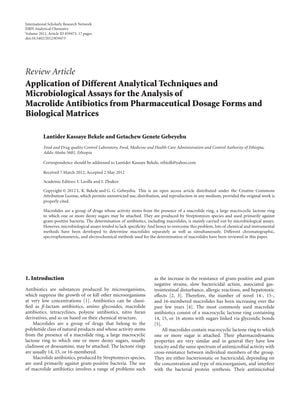Application of Different Analytical Techniques and Microbiological Assays for the Analysis of Macrolide Antibiotics from Pharmaceutical Dosage Forms and Biological Matrices
August 2012
in “
ISRN Analytical Chemistry (Print)
”

TLDR Future work on macrolide antibiotic analysis will aim to enhance selectivity, sensitivity, and efficiency using advanced chromatographic methods.
The document reviewed various analytical techniques and microbiological assays for analyzing macrolide antibiotics in pharmaceutical forms and biological matrices, highlighting the limitations and developments in these methods. It detailed the pharmacology, therapeutic applications, adverse effects, and pharmacokinetics of macrolides, as well as their physicochemical properties. Chromatographic methods like TLC, GC, HPLC, and CE were discussed, with HPLC being the most advanced. Spectrophotometric and electrochemical methods were also examined for their ability to analyze macrolides, which often require derivative formation for detection. Microbiological assays, including diffusion and turbidimetric methods, were mentioned for estimating antibiotic potency. The document concluded that future efforts in macrolide analysis would likely focus on improving selectivity, sensitivity, and efficiency with modern chromatographic techniques.